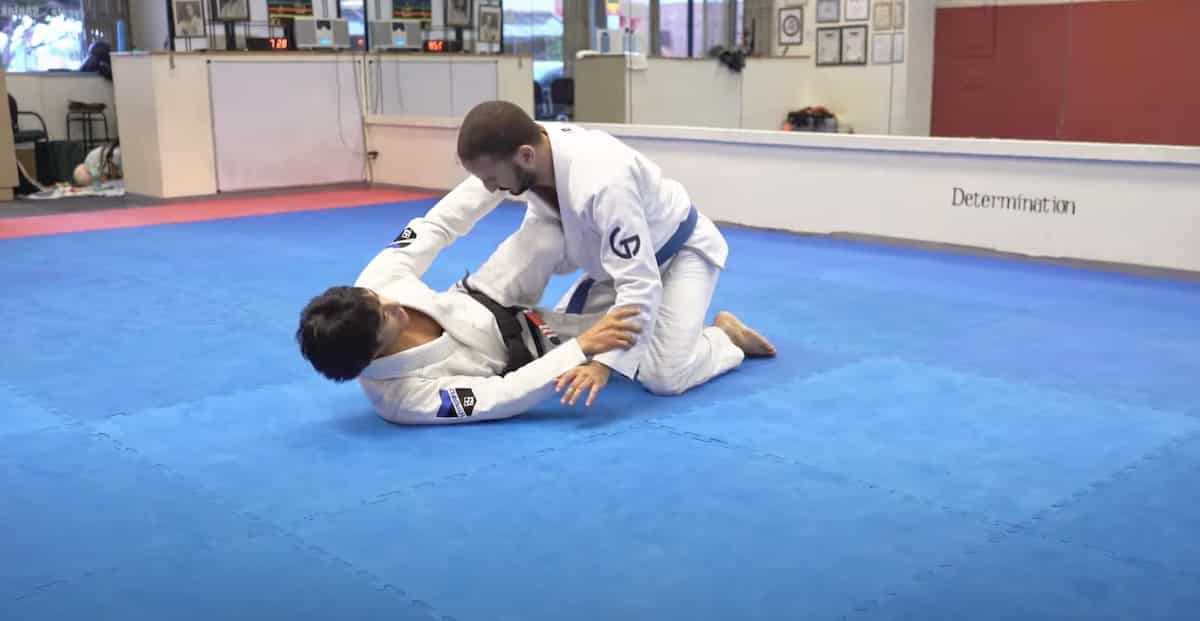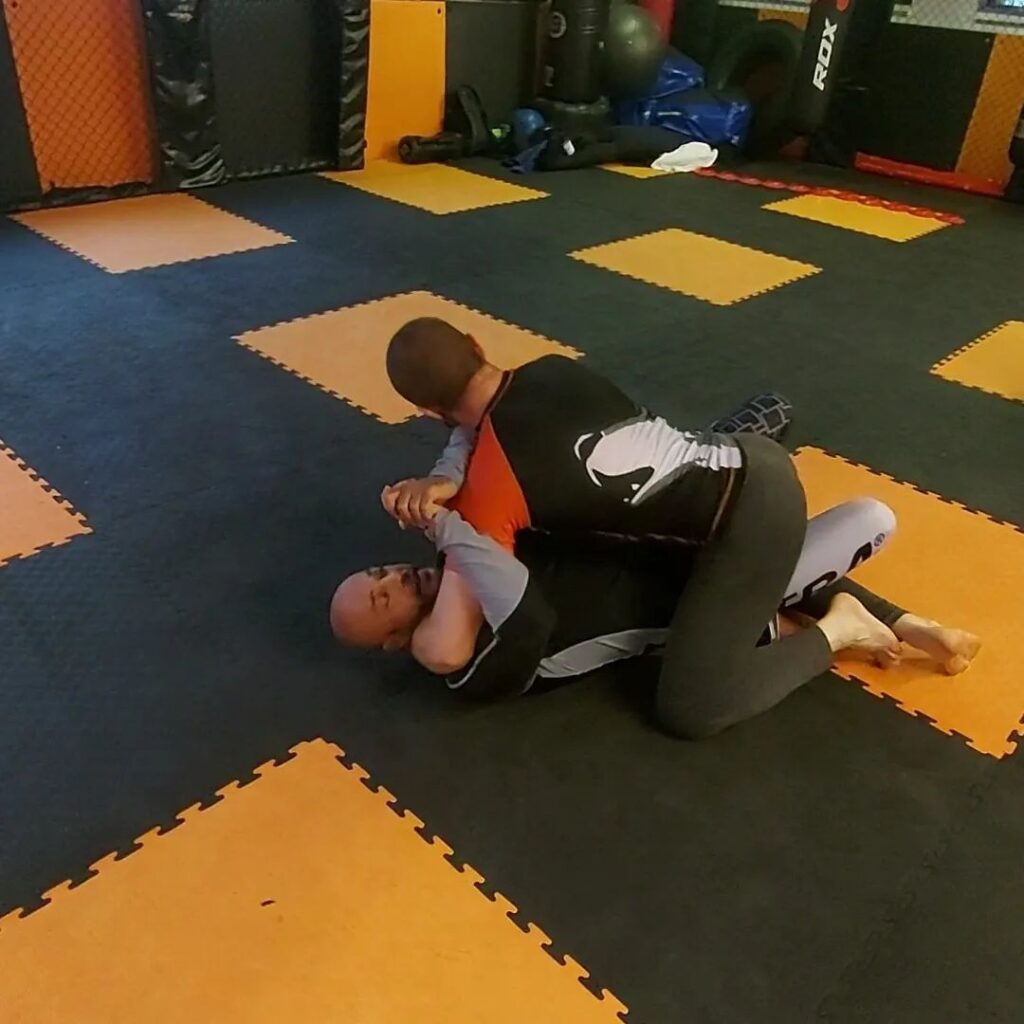Z Guard: BJJ Technique Explained

The Z guard is one of the most popular guards used in Jiu Jitsu today. It provides great control and offers a wide range of attacks for its users.
Many of the best Jiu Jitsu athletes in the world have implemented the z guard into their games. Most notably leg lock specialists Lachlan Giles and Craig Jones.
For those looking to learn an effective guard, here is everything about the z guard. We’ll tell you how it works and give details to do a wide variety of different techniques from the guard. Also give you tips for how to properly hold the z guard.

Who invented the Z guard?
The Z guard is a BJJ guard that really has no one person responsible for creating. It started to get innovated years after BJJ pioneer Roberto “Gordo” Correa developed his attacking game from bottom half guard.
Today it is widely taught throughout nearly all of the BJJ affiliations in the world. Good for both Gi and No-Gi Jiu Jitsu.
How does the Z guard work?
The Z guard works as a way to control the space between your and your opponent. You have a knee shield placed on your opponent’s chest at an angle with your bottom leg hooking their leg.
Along with your knee shield up, your hands are also up to block your opponent from controlling your head or punching.
Once you have a good knee shield and your hands up, you have established control of the distance. Now you push or pull your opponent to set up the attack of your choice.
Z guard armbar
A common way your opponent will try to counter your Z guard is by doing a crossface. Hugging your head and laying down heavy shoulder pressure for a pass attempt.
When they do this, you can use this as a trap to set up an armbar.
As they try to crossface you, clasp your hands together using a butterfly grip on your opponent’s shoulder. Be sure to put your grip right on your opponent’s shoulder in order to have the best control.
With that arm controlled, you’re going to take your knee shield out and bring it over your opponent’s head. Bring it all the way over their head and under their body.
Once it comes over, you’re going to clasp your thigh with your inside hand to close off space. From there, you grab their thumb/hand with your free hand, and then to a 2 on 1 grip.
Bridge your hips in to get a quick tap.
Heel hook from Z guard
Z guard has proven to be quite effective in setting up a variety of leg locks. Here is a simple set up that comes off an opponent’s counter.
You start by attempting to go into a single leg x to attack your opponent’s outside leg. Bringing the foot of your knee shield leg under their body and underhooking their outside leg.
A common defense is to try and sprawl back to stop the entry. When your opponent starts to defend, take your bottom leg out and behind their inside knee. Going right into a saddle position.
From there, invert under your opponent, clasp onto their heel, and get the tap.
Carnie shoulder lock
10th Planet standout Ritchie Martinez came up with a great shoulder lock from the knee shield/ z guard. Start the move by baiting your opponent to take an underhook by taking off your knee shield.
Immediately when they do this, you’re going to put your leg behind their head. This position is called the Jersey position, where you hold your knee with one hand and your ankle with the other.
Next take your hand holding your ankle off and frame on your opponent’s head and bring your foot over their head. Their inside arm is now isolated and open to attack.
For the finishing sequence go belly down, grab their far arm for control. Then with their far arm controlled, grab the wrist of your opponent’s inside arm and lift it up for the submission.
Z guard kimura
The kimura is a great option from the Z guard with a lot of different variations. Start in Z guard and then grab control of your opponent’s wrist and your other hand on their shoulder framing.
Next quickly take your knee shield out and hip into your opponent and lock in your kimura grip Your first option is that you can finish the kimura from here by looking up and wrenching their arm.
Although more than likely, your opponent will try to defend by rolling. If they do this just follow them up and take top half guard to finish it from there.
Z guard rainbow sweep
From the Z guard in the Gi, you can set up a really easy sweep called the rainbow sweep. Start with collar and sleeve grip before switching your grips.
Your hand grabbing the collar goes to your opponent’s sleeve and your other hand grabs at the side of their knee.
Then you use your knee to push your opponent back to get them to react by pushing back. When they come back, you use the sleeve grip to bring their arm around your head like a rainbow.
Taking their arm around your body as you lift them up using your knee grip. Once they’re up, do a kicking motion with your top leg and roll back to finish the sweep.
Z guard counter pass sweep
Here is an easy Z guard sweep you can do when your opponent tries to pass by hooking your knee shield.
When they reach under your knee shield, take a sleeve grip and grip on their pants near the knee. Once you secure your grips, pull them towards your top knee as you turn your hips.
As you turn your hips, your knee shield turns up and they go over easily for the sweep.
Z guard leg stretch pass
On top of knowing how to play Z guard, you also should know how to pass it. The leg stretch pass is a great option for when your opponent blocks the knee slide pass.
With your knee in between your opponent’s legs, you’re going to grab their pants on their knee shield leg. Once your grip is set, you can straighten your arm behind you to take away their knee shield.
Now that you took away their knee shield it makes doing your knee slice pass easier. Keeping your grips, knee slice across your opponent’s shins and slide to the side.
Once their guard is passed, keep your grips and walk your body into side control to complete the pass.
Z guard smash pass
Another way you can pass Z guard is a variation of a smash pass and knee slice pass. Start by driving your knee between your opponent’s legs to create pressure.
Next, you’re going to grab the sleeve of their inside arm. Then you’re going to pull up on that sleeve grip as you put your other hand on the mat.
When you do these movements together, you rise up and drive your hips across your opponent’s bottom leg. To complete the pass, keep the sleeve grip and push it towards them as you walk into side control.
Tips for using the Z guard
Putting the Z guard into your Jiu Jitsu arsenal can really elevate your game, but you need to remember the details. Here are important tips to remember when using the Z guard.
- Knee Shield: A good Z guard starts and ends with a properly placed knee shield. Make sure to place your knee on your opponent’s chest to keep control of the spacing.
- Hands Up: Along with your knee shield, keep your hands up to keep your opponent from grabbing your head. Once they grab your head, you’ve lost control of the position.
- Bottom Leg Hook: Your bottom leg needs to be hooking your opponent’s leg to keep them in place. Otherwise, they will easily pass your z guard.
- Underhook: Most of the sweeps from this guard require that you get an underhook. To get an underhook, you must quickly remove your knee and sit-up to underhook.
Push & Pull: To do any technique from the z guard requires that you push and pull your opponent. Doing this destabilizes their base and leaves them open for attack.






